Art World
Cartier’s New Jewelry Suite Is an Ode to Cinema’s Femme Fatale and Fashion Plate María Félix
The eccentric Mexican actress famously commissioned Cartier to create stunning animal-inspired jewels, which inspire the new collection.
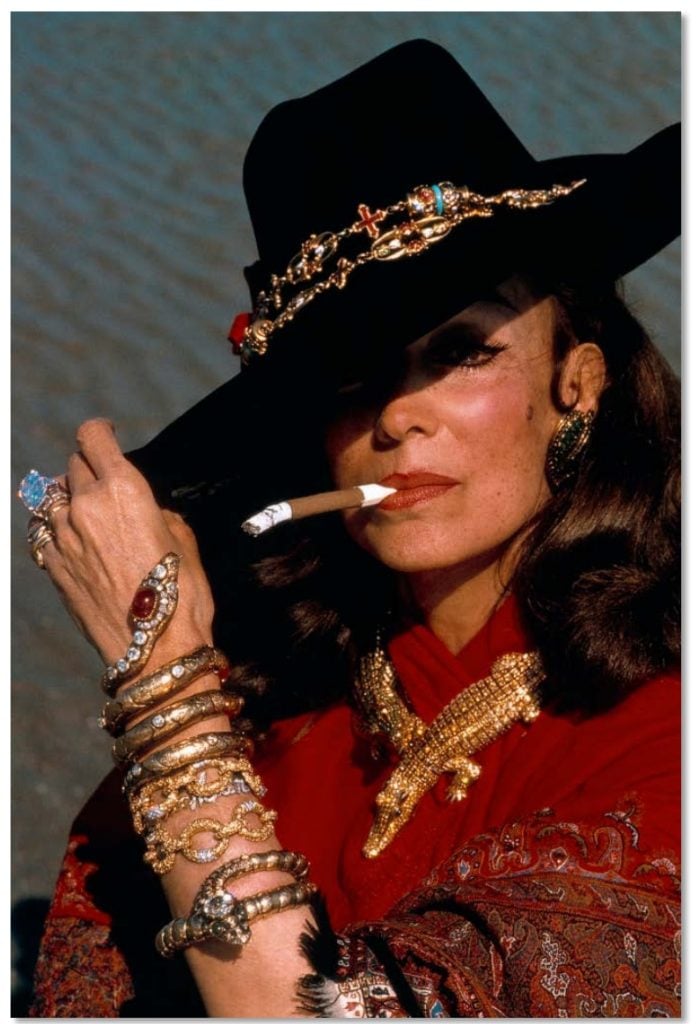
The eccentric Mexican actress famously commissioned Cartier to create stunning animal-inspired jewels, which inspire the new collection.

Nazanin Lankarani

Revisiting its storied past, luxury jeweler Cartier has designed a stunning new ensemble that evokes the famed “crocodile” necklace commissioned more than forty years ago by the Mexican film star and femme fatale, María Félix.
In 1975, Félix, an established client with a penchant for extravagance, walked into Cartier’s flagship boutique on the Rue de la Paix in Paris. According to legend, she carried a live baby crocodile in a jar and commissioned a jeweled necklace that was an exact representation of the beast.
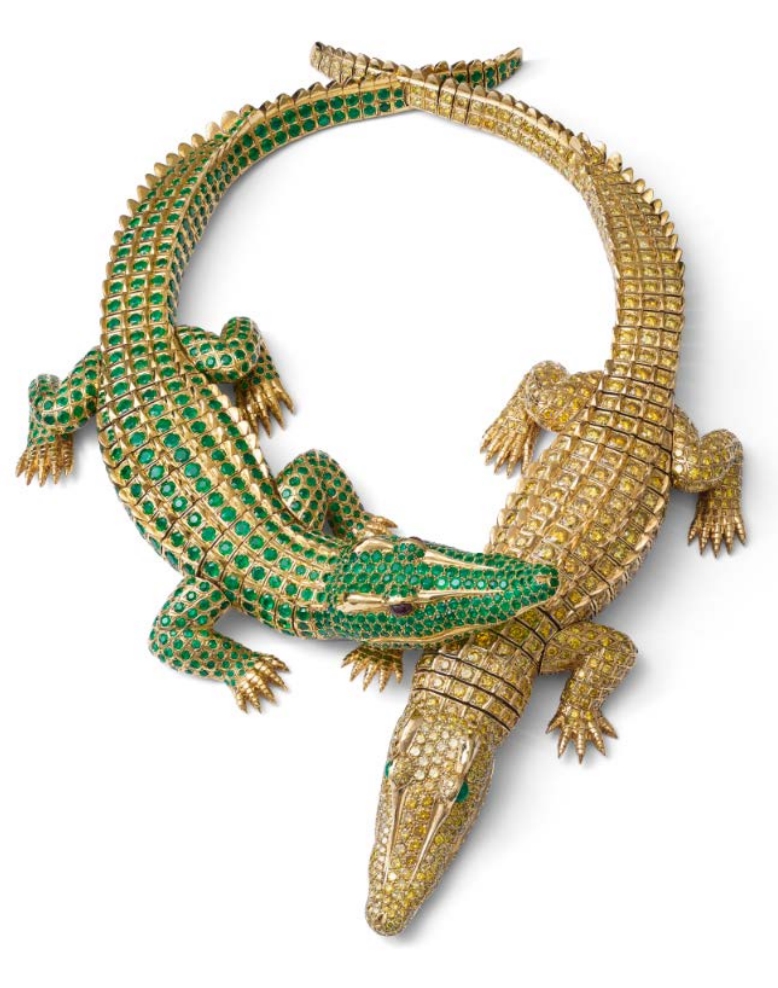
Cartier Paris Crocodile necklace, 1975. Courtesy of Cartier.
Cartier obliged with a fully articulated piece shaped like a pair of small crocodiles, one paved with emeralds and the other with yellow diamonds. The necklace could be converted into two brooches, and even doubled as a sculptural table ornament that Félix would display as a decoration at her dinner parties. Today, that stunning piece is part of Cartier’s patrimonial collection, having been reacquired by the jeweler after it was sold by its original owner.
This year, Cartier revisits its menagerie with a new high-jewelry suite that pays tribute to Félix’s striking necklace. Starting with a rare collection of 14 cabochon-cut emeralds from Colombia totaling 46.45 carats, Cartier has designed a new crocodile necklace, complete with ridges and a long, emerald-beaded tail, with a matching bracelet, earrings, and ring—which are remarkable not just for the quality of their stones, but also for the realism of the design. The same artisan-sculptor who crafted Félix’s jeweled crocodiles was involved in the new design.
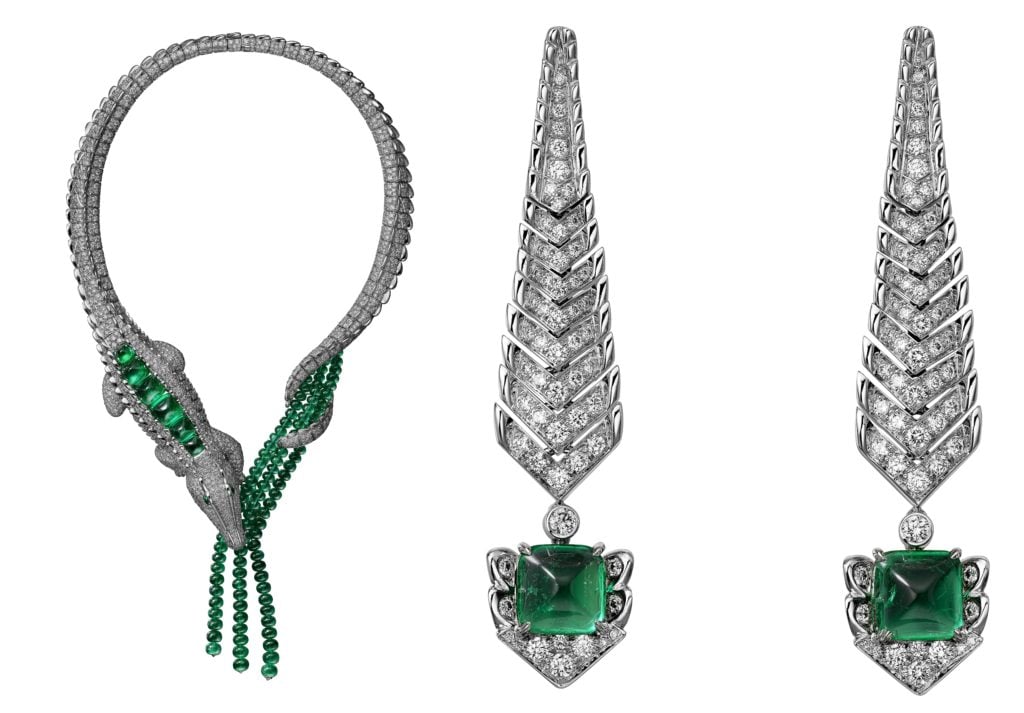
Necklace and Earrings from the María Félix Cartier Collection.
Pierre Rainero, Cartier’s director of image, style, and heritage, spoke with us to explain the inspiration behind this new suite and to separate fact from legend in the legacy of María Félix.
Did reptiles figure in Cartier’s repertory before María Félix?
When we speak of crocodiles at Cartier, we immediately think of the famous special order for María Félix. But reptiles in general and crocodiles in particular have been part of Cartier’s menagerie since the early 20th century, long before María Félix walked into the boutique.
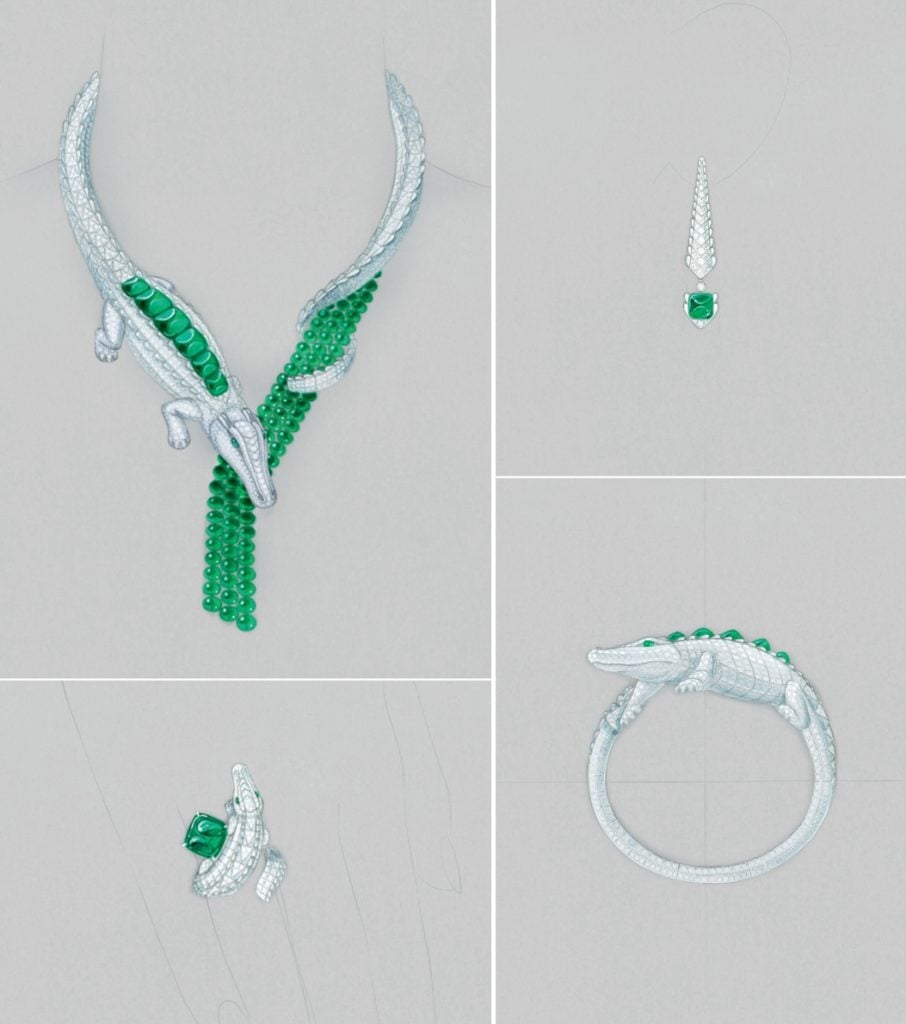
Cartier high jewelry necklace, bracelet, ring, and earrings. Courtesy of Cartier.
What inspired Cartier to revisit the crocodile motif?
The idea for the new design came from a group of 14 exceptionally beautiful cabochon-cut emeralds from Colombia. The stones were what we call “en chute,” meaning in a graduating range of sizes, with different volumes and weights. We decided to recreate the shape of a crocodile and set the emeralds on top. We were also inspired by the Egyptian deity, Sobek, typically represented as a human figure with a green crocodile head. Sobek foretold the flooding of the Nile, a good omen for the fertility of the lands.
Is the new jewelry suite a tribute to María Félix?
Of course, María Félix’s piece was a spectacular example of Cartier’s naturalism. The importance of the realism in our fauna is visible in the sculpted shape of the necklace and also in the side view of the bracelet. Technically, articulating the pieces enhances their realistic representation. It also adds to their playfulness.

Portrait of Mexican actress María Félix in Venice, August 1959. Photo by Emilio Ronchini/Mondadori Portfolio courtesy Getty Images.
How much is legend in the backstory of Félix’s special order?
In 1999, I personally asked Félix about the story of the baby crocodile in the jar. She told me then that the story was true. But we know now that she liked to embellish! The truth is that Félix was a well-known Parisian socialite in the 1970s. She was featured everywhere in magazines, and was frequently photographed wearing her beloved Cartier jewels, including to the horse races in Deauville.
Before she turned to reptiles, Félix had amassed a large collection of Cartier panthers. She started buying them from existing collections in the 1960s when she first arrived in Paris, then graduated to placing special orders. After her husband passed away [in 1974], her interest shifted to reptiles, though I cannot say with certainty that the two events were related!
What place does Félix occupy among Cartier’s important clients, who have included the Duchess of Windsor?
In response to a similar question, Cartier’s former creative director, Jeanne Toussaint, once replied: “Barbara Hutton owned the most important stones.” That statement was true, without comparing clients. As for Félix, all I can say is that she loved jewelry and wore her Cartier snake and crocodile pieces as often as possible. In an interview, she was once asked why she liked snakes so much. She responded: “It is not that I like snakes, I like diamond-set snakes.”
What makes Cartier’s repertoire of animals so appealing?
Cartier was the first jeweler to cultivate a certain notion of a woman’s freedom to express herself through figurative jewelry. The panther is a great example. María Félix appreciated that freedom and pushed its boundaries by going beyond traditional animals and also by choosing conspicuous pieces.
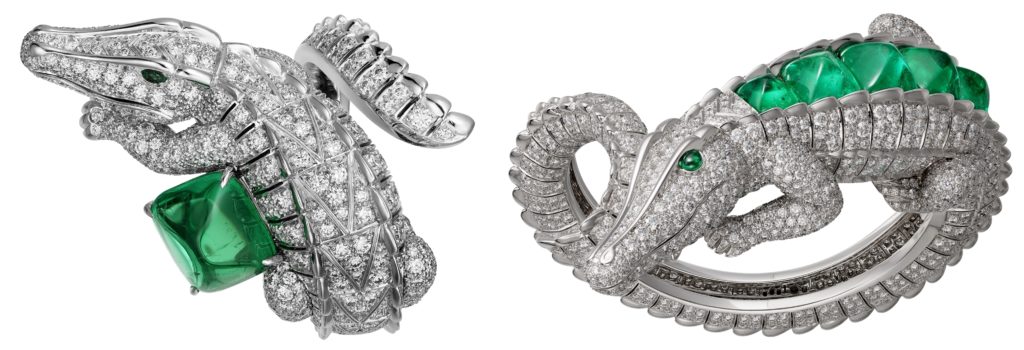
Ring from the María Félix Cartier Collection.
What makes for the sculptural quality of Cartier’s jewelry?
Cartier’s figurative jewelry is made like sculpture. We craft our jewelry as three-dimensional objects: they are well made front and back. We have also made jewelry stands out of rock crystal, so the piece can be displayed upright like an art object. María Félix, for instance, used her double-crocodile necklace as a decorative piece on her dinner table. Her necklace could be separated in two, and the parts placed on a table as separate art objects. In fact, Cartier had made them as “objects of contemplation,” meaning that they were pieces to gaze upon and admire, beyond their utility as jewelry. This new suite is made in the same way.
Where can the public view this new ensemble and some of Félix’s jewelry?
The new suite will be unveiled in the near future, though we have not determined where we will present it first. As for pieces from Félix’s collection, some will be featured among the 700 spectacular Cartier pieces that will be presented in an important exhibition dedicated to Cartier and titled “Beyond Boundaries” at the Palace Museum of the Forbidden City in Beijing. The show will open in June and run through July. The María Félix pieces will be included in the “Royal Power” section of the show. Though she wasn’t royalty, her jewelry was chosen to demonstrate her power as a woman.